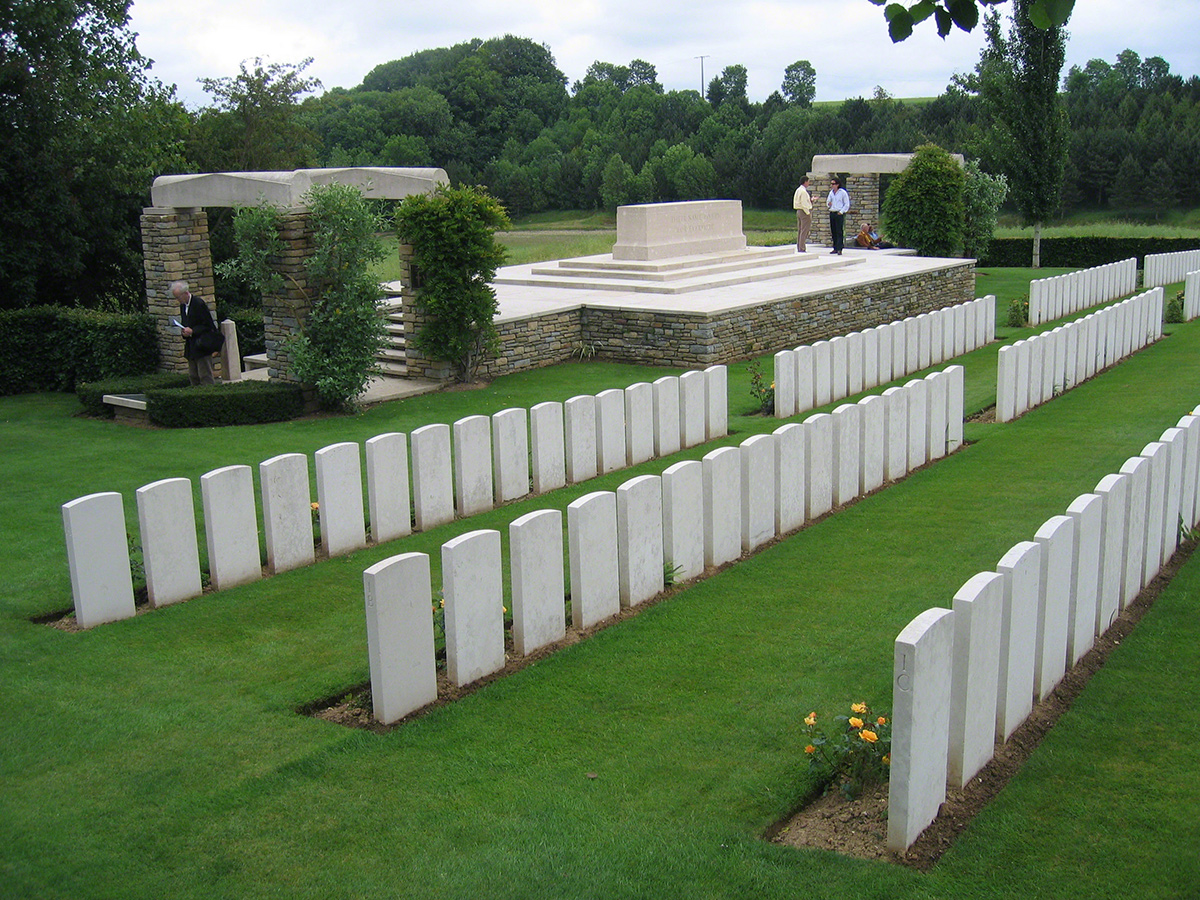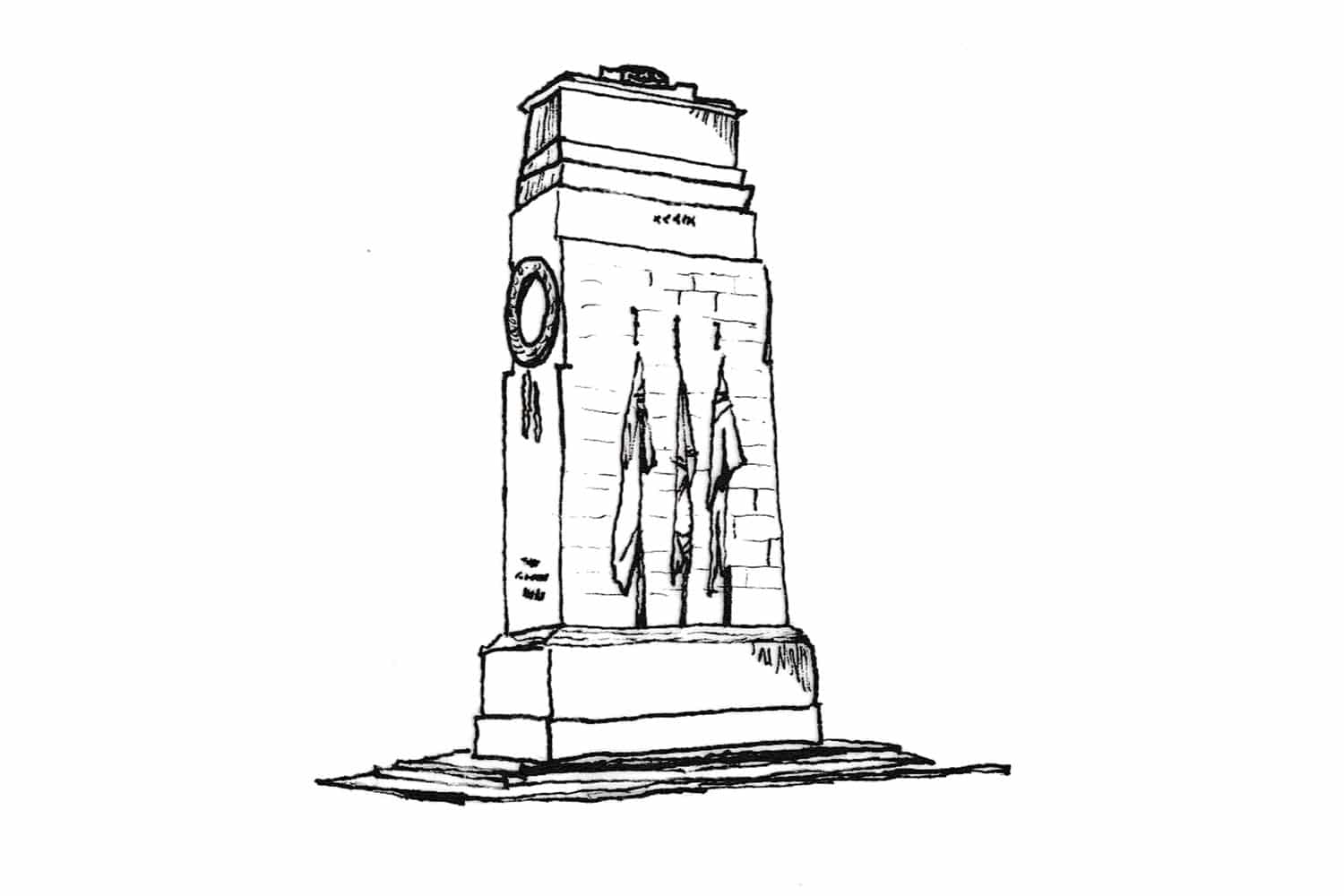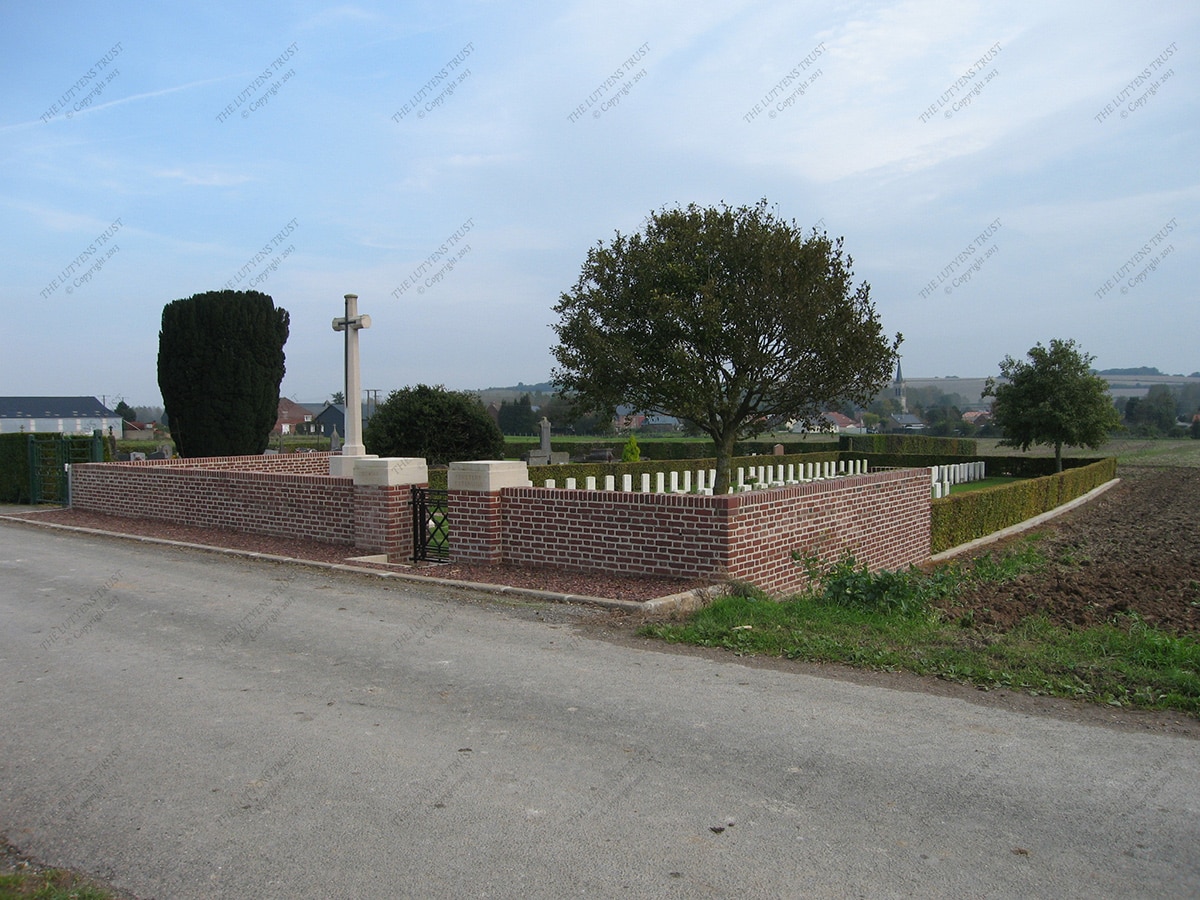
Description
The construction of the cemetery began directly after the German invasion of Picardy. It was predominantly used by some Casualty Clearing Stations and the Canadian hospital in the citadel of Doullens. The cemetery lies south of the village at the end of a country road, along a railway track that is no longer used. Arable land bounds the other sides of the cemetery.The cemetery is visible on arrival, although the entrance to the cemetery is hidden, as it were, in a grove. A grassy path between shrubs leads the visitor to the entrance, which has been incorporated in a pergola construction. The cemetery is overwhelming due to its location and the exceptional use of the trees, which look like columns bearing the vault of heaven. They are not only planted along the boundary but also among the graves, which is unusual.
The War Stone is on a high platform on the east side and is accessible by way of stairways. There are double porches on either side, designed as pergolas. Similar pergolas designed by Lutyens are found in a series of cemeteries in the Doullens and Albert area, such as Albert Communal Cemetery Extension, Achiet-le-Grand Communal Cemetery Extension and Douchy-les-Ayette British Cemetery. However, the only place where the War Stone has been placed between two pergolas is Warlincourt Halte British Cemetery in Saulty, east of Doullens.
The position of the Cross of Sacrifice is unusual in that it is not in line with the organizing axis of the cemetery. Perhaps the presence of the Chinese graves and the land tablet with the special memorials made it impossible to place it in its logical position opposite the War Stone. The Cross may also have been added to the design at a later stage, as has happened in Warlincourt Halte British Cemetery. Or the Cross has been placed along the side to make the cemetery visible from the access road.
The cemetery is surrounded by a beech hedge and lies on a slope with the entrance on the low side. The visitor enters by way of one of two paths that lie parallel to the central axis with the War Stone. The graves face east, where the War Stone has been placed on a platform like an altar. The position of the graves and the War Stone is in line with the principles formulated by Lutyens in 1917 but which were already in practice in 1916.
The pyramidal trees are a special variety of poplar, Populus tremula Erecta, which is different from the usual Lombardy poplar. Eight trees have been placed along the boundary and four in the middle, among the various plots. On account of the shifted location of the trees in the middle, diagonal visibility lines have been created across the cemetery, giving rise to a pattern of trees in the cemetery. One of the plants covering the pergolas is wisteria. Each plot has an extra row of plants behind the headstones, the backborder, which links up with the position of the trees along the boundary. The borders of the headstones in the three sections of the plots, from the front to the back, have alternating beds of roses in the colours yellow, red and yellow. The central path is lined by boxwood. (Geurst, 2010, pp.202-4)
Bibliography
Geurst, J. (2010) Cemeteries of the Great War by Sir Edwin Lutyens. Rotterdam: 010 Publishers.Also Cited In
Listing Grade
Coming soonListing Reference
Client
Imperial War Graves Commission


